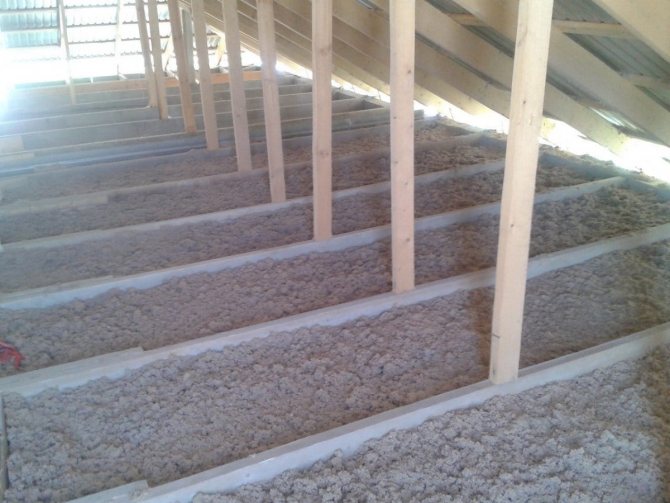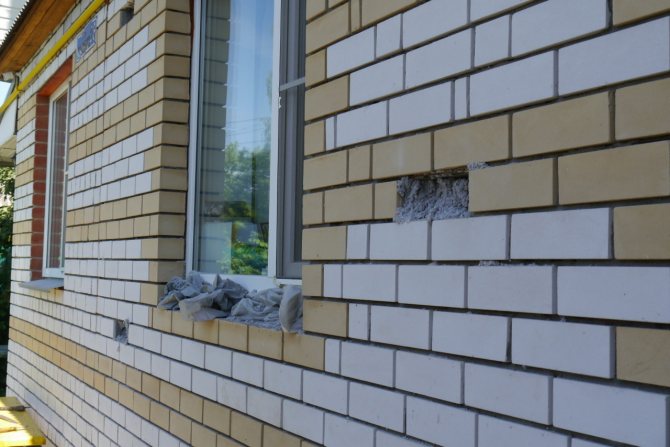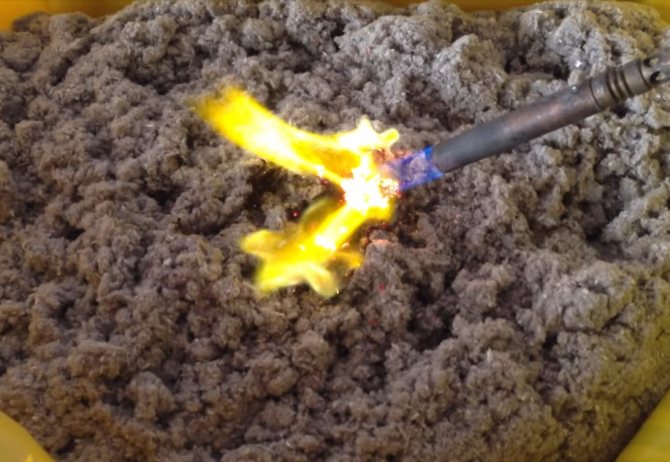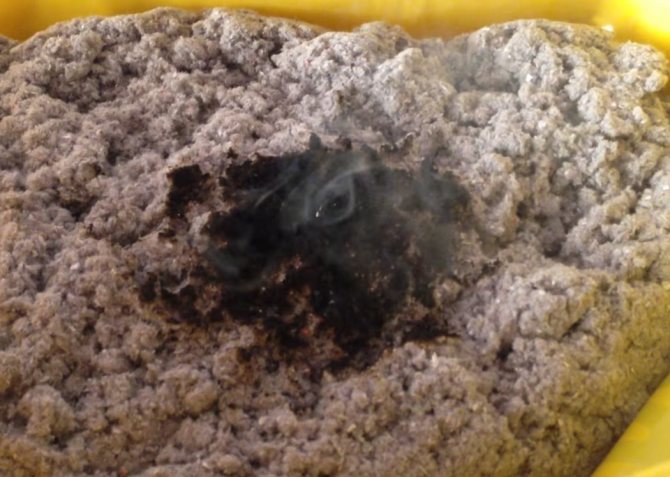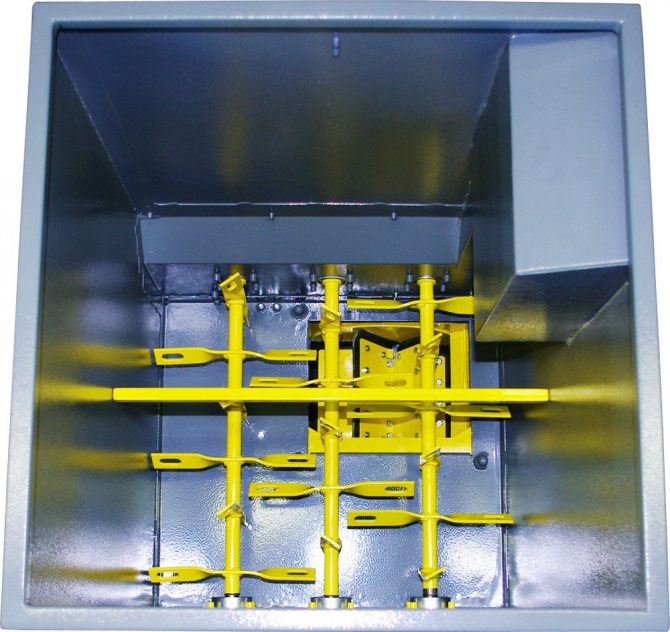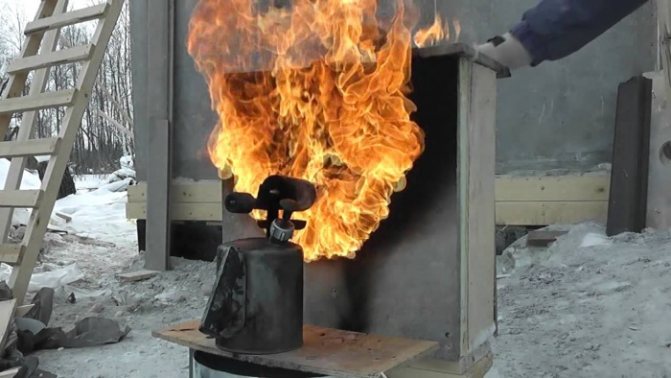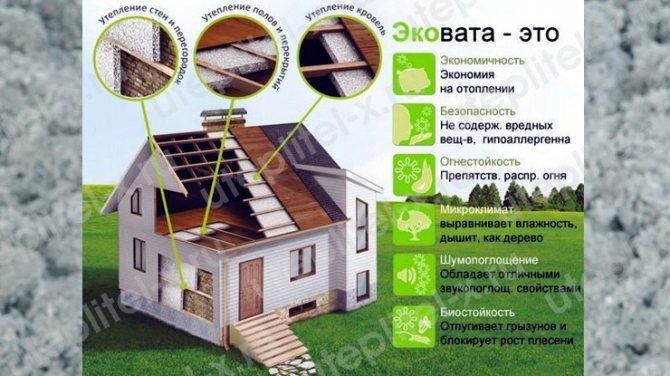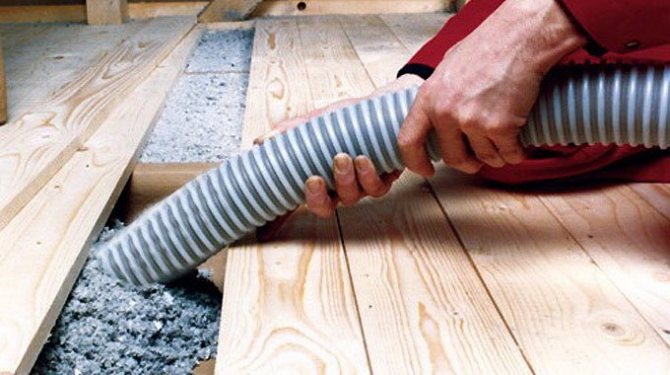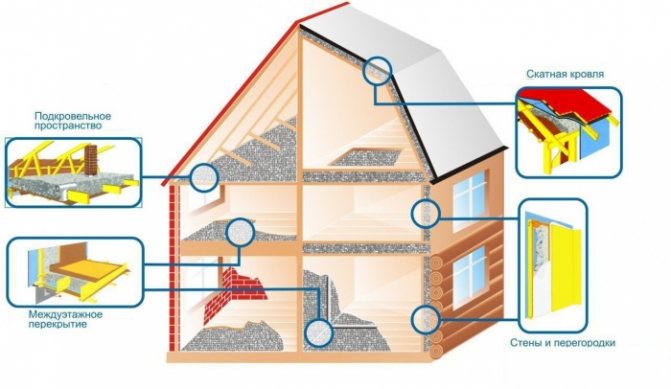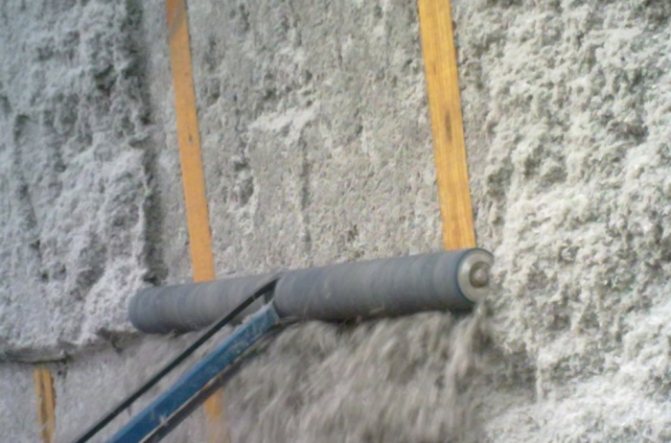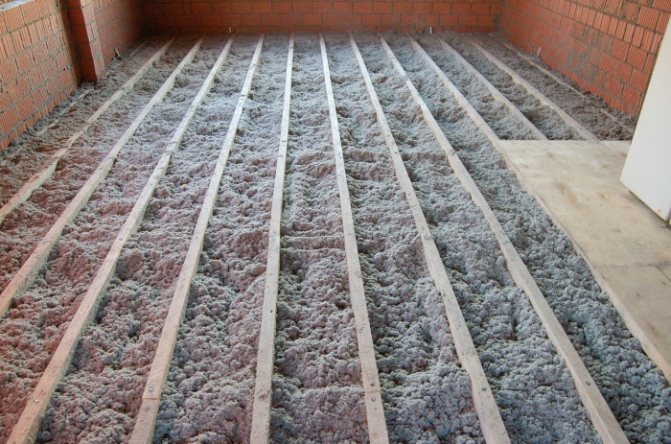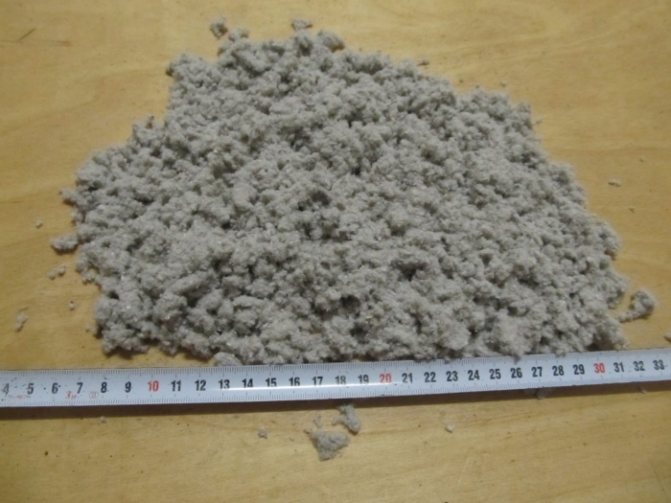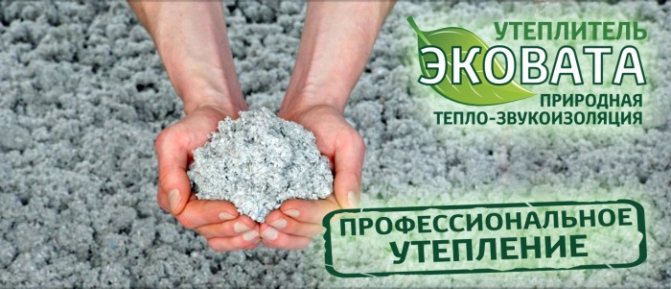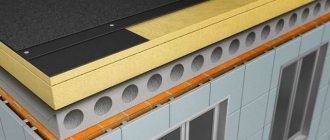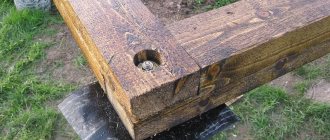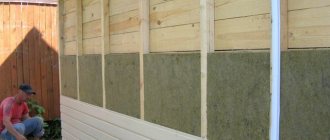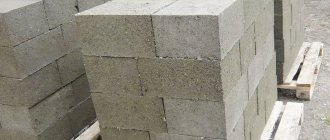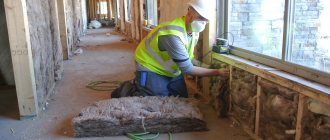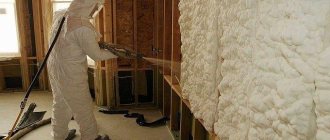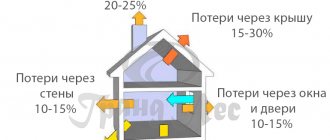Many of us, engaged in construction, were faced with the problem of choosing a heater for buildings. Today, the market offers many different types of insulation, which differ:
- by its quality;
- materials of manufacture (natural or synthetic);
- by cost;
- by the consumption of insulation material;
- by the service life of the insulation;
- for thermal insulation properties and many other characteristics.
The most optimal option, which appeared at the beginning of the 20th century in the market of North America and Europe, is cellulose insulation, or ecowool. Consumer reviews about it are of a different nature, they are both positive and negative.
Background to the creation of cellulose insulation

The first mass production of insulation from recycled cellulose was organized in Germany in 1928. Later, already in the 50s, when the boom in the construction of frame houses began in North America and Europe, the production of ecowool acquired a huge scale of production. The countries in which cellulose wool as insulation has gained the greatest popularity are Canada, USA, Finland, Germany, Austria, and this material is widely used, oddly enough, in Japan. Cellulose wool in Russia is called "ecowool".
For comparison: in Finland, with a population of no more than 5.5 million people, the production of this insulation is almost 25 thousand tons annually, which is more than 1 million square meters of insulated buildings. The bulk of ecowool production falls on the private construction sector, which is more than 70%. Often houses are built from modern building materials that only imitate such natural building materials as glued beams, rounded logs, natural stone, etc. Cellulose wool acts as a heater inside. Thus, in Finland, the share of private residential premises that are insulated with ecowool is more than 80%. This trend of using this building insulation is explained as follows:
- in a humid climate and negative air temperatures, buildings insulated with ecological insulation last much longer than synthetic ones;
- the cost of repair and maintenance of premises for the replacement of insulation material is reduced;
- such insulation performs the functions of a thermos: in winter it retains heat, and in summer, in hot weather, it is cool, and also protects all buildings from microorganisms and rodents, which are the scourge of building materials.
Taking into account the above facts, the Ministry of the Museum Department of Finland made a decision obliging all museums in the country to use cellulose wool as the main or additional insulation, since, having hygroscopicity, it preserves the necessary microclimate for museum exhibits and the most legally protected historical buildings.
And in North America, in particular in the USA, the number of houses insulated with ecowool reached almost 340,000 in 2005 alone.
In Russia, the spread of cellulose wool began only in the early 90s. Both the total number of enterprises producing ecowool and the number of its consumers are steadily growing exponentially. Because consumers were able to see the positive qualities of cellulose and the benefits of using it. And the most important thing is the availability and low cost of raw materials for its production.
Ecowool manufacturers
Despite the fact that this material is quite "young", its production is widespread among the leading brands in Europe and Russia.This is natural, since demand for this type of insulation is constantly growing and its popularity, thanks to the positive experience of use, is gaining momentum. We will announce the most famous ecowool manufacturers:
- Greenfiber
A well-known American company, which, perhaps, can be called the world leader in the production of ecowool. Its production is equipped with the latest equipment, and technologists are constantly developing in terms of improving the properties of the insulation. Ecowool Greenfiber is known all over the world, is certified at the international level and is rightfully considered the best. In Russia, it is not so common because of its high cost.


- Ekovilla
Well-established manufacturer from Finland. The experience of this company in the production of building materials, including heaters, is about thirty years, and this already says a lot.
- Termex
Also a Finnish company, like the previous representative. Founded in 1988 and since then has been constantly improving the quality of the supplied products. He has solid experience and uses only high quality raw materials. Ecowool Termex is distinguished by its durability and excellent, completely safe composition. The production facilities of the company were among the first to use energy from wind turbines to ensure the operation of equipment.


- Isofloc
Leading German manufacturer of insulation materials, including ecowool. The quality of its products is confirmed by the presence of European certificates and many years of experience in use in a variety of conditions. Ecowool of this brand is widely sold in Russia and abroad.
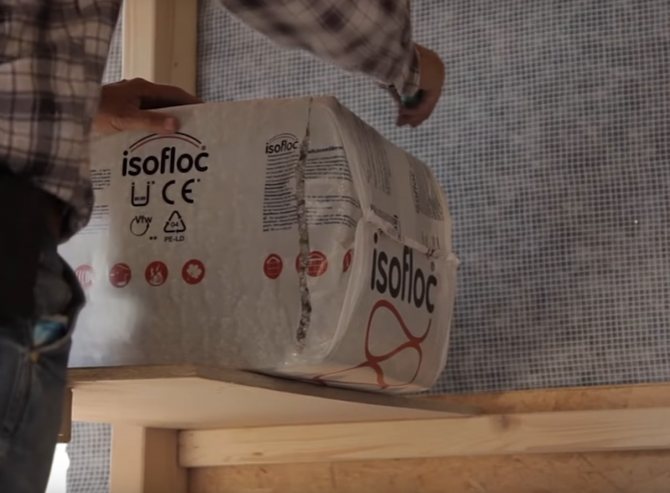

- "Ekovata Extra"
Russian manufacturer producing ecowool under the Extra brand. This insulation also has good technical characteristics, does not contain harmful impurities and is widely used to insulate various objects. Suitable for any building, both new and old, can be used on a wide variety of surfaces. The quality department carefully monitors that the "Extra" ecowool corresponds to all the declared properties in full.
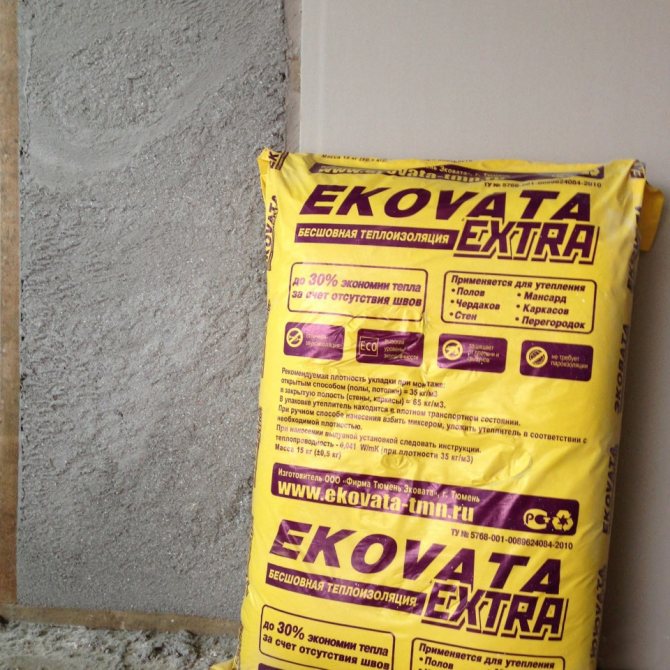

- "Equator"
Also a large producer of ecowool from Russia. The company entered the market of thermal insulation materials since 2007 and over the past time has established itself from the best side. For the manufacture of ecowool, waste from newspaper production and unsold periodicals are used here. The workshops are equipped with fully automated equipment that works practically without human intervention. Feedback on the use of Ekvator ecowool is positive both from individuals and construction companies.


- Kirov Eco Plus
Another Russian manufacturer working on modern equipment. Raw materials are supplied only with European quality certificates, and in the manufacture of ecowool there is constant and careful control. The insulation of this manufacturer is widely known in the territory of the Russian Federation and is in justified demand among consumers.
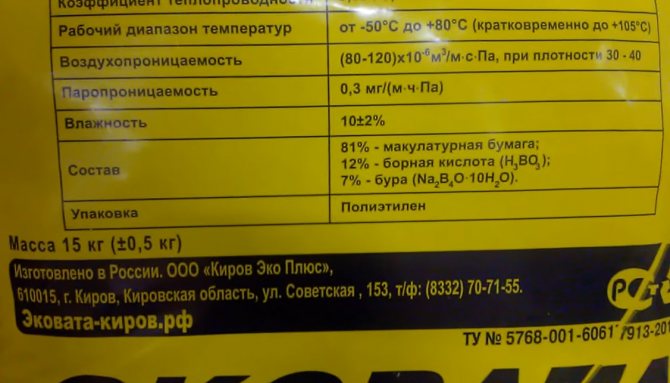

- "Nanovata"
The production facilities of this manufacturer of ecowool are located in Kazan. It also follows the technology of production of insulation and a careful selection of raw materials. This manufacturer is convenient not only for the high quality of materials, but also for the prices that are affordable for most consumers.
Ecowool is a modern insulating material that is gaining popularity. It is actively used in household and industrial facilities. Thanks to convenient installation, versatility of use and, most importantly, health safety, ecowool will continue to be in great demand among consumers.
Structure and composition of ecowool, distinctive features
Ecowool is a heater with a capillary-porous loose structure. It consists of:
- cellulose fiber - 81%;
- fire retardants (for protection against combustion) - 12%
- non-volatile antiseptic materials (boric acid) - 7%.
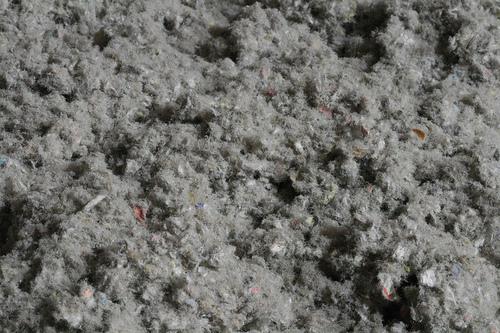

Ecowool is produced mainly from recycled cellulose fiber, namely waste paper.
Ecowool insulation has a gray or light gray tint.
There are other types of insulation, similar in structure, these are:
- mineral wool;
- basalt wool;
- glass wool;
- expanded polystyrene.
All these synthetic insulation materials contain phenolic compounds, which are toxic to humans. When these materials are heated to a temperature of 250 degrees Celsius, the binder completely evaporates from them, which makes further use of the material impossible. Also, a big disadvantage of this type of insulation is that they are made from synthetic materials that do not absorb moisture remaining on the surface of the fibers. Ultimately, this leads to the formation of such problems with insulation, such as:
- the formation of condensation on the surface;
- reproduction on the surface of fungal formations and mold;
- the formation of "cold seams" in the insulation.
Ecowool composition and its main properties
High quality ecowool contains only three components:
- 80% cellulose fiber.
- 12% boric acid, suppressing the development of microorganisms, mold, fungus.
- 8% borax, or potassium tetraborate. It repels insects and rodents and at the same time is a strong flame retardant.
For the manufacture of ecowool, several types of raw materials are used:
- Waste from paper and cardboard production.
- Residues from the production of corrugated board products.
- Polygraphic marriage.
- Waste paper, unsuitable for processing into high-quality paper, including contaminated.
Not so long ago, ecowool appeared on the Russian market and is gradually gaining popularity for the thermal insulation of buildings of various purposes: from airports and concert halls to warehouses, industrial buildings and private houses.
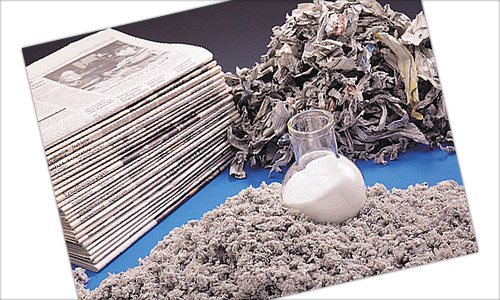

What is ecowool made of
Related article - RockWool insulation.
The main characteristics of the ecowool offered by the market are as follows:
- The thermal conductivity coefficient at the level of mineral wool and expanded polystyrene is 0.036-0.043 W / mK. It should be borne in mind that due to the seamless application, the overall thermal insulation capacity is significantly higher than that of other materials.
- The density depends on the method of installation (or application) and can range from 25 to 90 kg / m3.
- Heat resistance group - G2, smoke generation - D2.
- The vapor permeability of the laid ecowool is 0.3 mg / (mchPa).
- Air permeability (80-120) * 10-6 m³ / msPa.
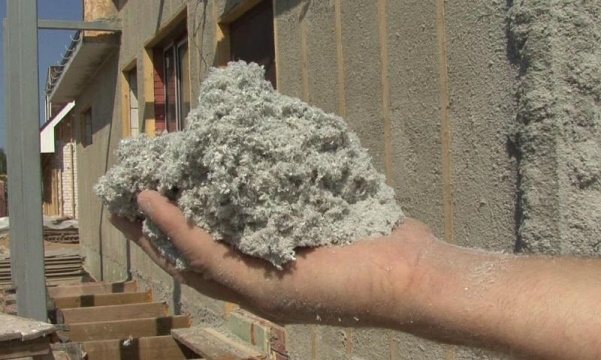

Ecowool fluffed up ready for application
The strength of the material is low in comparison with others. It is not suitable for insulating flat roofs, where the insulation has to withstand heavy loads during operation.
The advantages of ecowool as a hygroscopic material
Ecowool, unlike synthetic materials, due to natural cellulose capillaries in its structure absorbs moisture by almost 14% and at the same time does not lose its qualities, like other heaters. On the contrary, it retains its qualities in a moist state, like wood, that is, it retains heat and does not freeze. For those who decided to insulate the room with ecowool, there will be no need to use a vapor barrier film, since there is no condensation on the surface.
Heaters made of synthetic materials (mineral, basalt and glass wool) have the following negative properties:
- the movement of air and moisture occurs along their fibers;
- moisture is not absorbed by the materials, but accumulates in the form of condensation, which harms the surrounding building materials;
- to remove moisture from the insulation, it is necessary to create ways of its removal through the use of membrane vapor-proof films.
It should also be noted that cellulose wool when wet does not change its volume due to the capillary structure of the fibers. That is, in the cold season, when the outside temperature is subzero and the air humidity is constantly increased, the volume of the insulation and, accordingly, the walls will not change.
When the humidity outside the room changes, cellulose wool compensates for the difference in the level of humidity inside due to the hygroscopicity of the fiber structure. This is also important when the outside air temperature rises, while the indoor temperature and humidity remain unchanged. Thus, the room will always be warm in winter and remain cool in the heat of summer, maintaining a favorable climate for materials and, of course, humans.
Ecowool is capable of absorbing water, the reviews of the masters therefore recommend that it also be used to insulate pipelines, since emergency situations of pipe rupture are possible, and in such cases, until the water supply is turned off, it is required to protect the buildings from water penetration as much as possible.
Insulation technology options
It is possible to fill the ecowool surface in different ways. On an industrial scale, wet material is sprayed onto the prepared wall. The fibers are placed in the framework with a compressor. A summer cottage, a bathhouse or a garage can be insulated manually, but in this case it will take more time. Ultimately, much will depend on the adherence to the technology and the qualifications of the master.
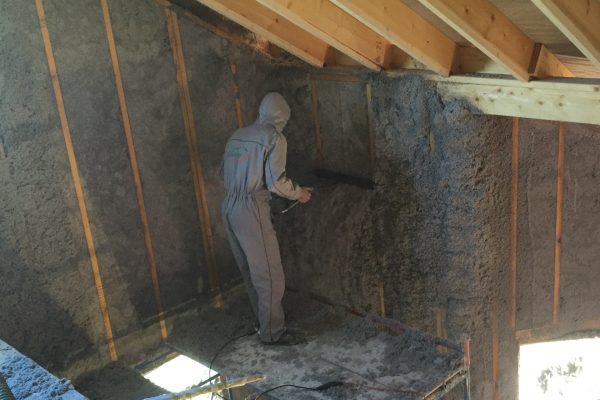

Excess ecowool needs to be removed
- Wet way. Lignin serves as an adhesive filler in this embodiment. Wet fibers adhere well to any substrate. The insulation layer must be within 50-60 kg / cubic meter This method is good for insulating block or brick walls. The lathing is made from a bar or profile (the first option is preferable). Insulation is applied using a professional installation. Loose cotton wool at the very outlet at the nozzle is impregnated with water and delivered to the surface under pressure. The wet method is easy and fast, indispensable for large volumes. The only disadvantage is the availability of professional equipment. For difficult surfaces such as the ceiling, on the underside, adhesives are dissolved in water for strength to help the line increase adhesion. The excess is cut off level and reused after drying. Actually, there is no waste for any installation option, since cotton wool is suitable for reuse.
- Dry method involves filling with dry ecowool cells of the crate on the wall, floor, ceilings. You can loosen the insulation with a nozzle for mixing solutions in a container of a suitable size. All surfaces are filled in bulk, tamping cotton until the forces are absorbed. When applying, they are guided by a simple formula: m = S * L * p, where m is the mass, S is the area; L is the layer thickness; P is its density. It is convenient to insulate ceilings with a filling method, where it is possible to compact the layer to 35-45 kg / cubic meter In frame housing construction, when insulating wells, this method is used less often, since it is tamped down to 60-65 kg / cubic meter m. not always possible.
Calculations for thermal insulation with a compressor
When applied horizontally, the distribution is close to 45 kg / cubic meter m., with vertical - 65 kg / cubic meter m. With the industrial method of insulation, ecowool is applied layer by layer using a professional installation. The frame must be covered with foil or kraft paper. A hole for the supply hose is left in the upper part. With the flow of forced air, the fibers fill everything, including hard-to-reach places. Then the hole is closed. Folk craftsmen, instead of a professional compressor, use a homemade installation based on a garden vacuum cleaner.
Video - Technology for applying ecowool in a wet or dry way
Manual styling
This is the most common way of installing ecowool, when there is no possibility of using special blowing machines for applying insulation. With this method, the cotton wool is first loosened with a hand tool, as it is compressed when packed into bags. The loosened cotton wool is placed around the entire perimeter of the surface to be insulated, or simply ecowool insulation is poured into these cavities. Reviews and comments of the masters say that for the manual method of installation, an important condition is compliance with the norms for laying cotton wool to obtain the desired result of insulation. So, according to the advice of experts, the norm for laying ecowool for walls is about 70 kg per 1 m3. If ecowool is used for ceilings, the consumption will be 2 times less, that is, 35 kg per m3.
Automatic stacking method


1. Dry installation method. The most optimal and fastest way to apply ecowool to the surface, however, this method requires knowledge of the installation methodology from the specialists involved in its installation. To start dry application, it is necessary to cover the inner surfaces of the frame with kraft paper or building board, thus obtaining a closed volume of space for filling. Cardboard or paper is fixed with a stapler or construction adhesive tape, because under air pressure, the paper surface can be blown out by air pressure or squeezed out with a volume of insulation.
2. Wet-adhesive application method. With this method, a solution is created from ecowool using a water-glue (PVA-dispersion) special solution. With the help of the installation, the ecowool is blown into the previously created space. Then the excess layer is cut off and dried using heat guns. The advantage of this method is that it is visual, that is, areas of filling the frame are visible.
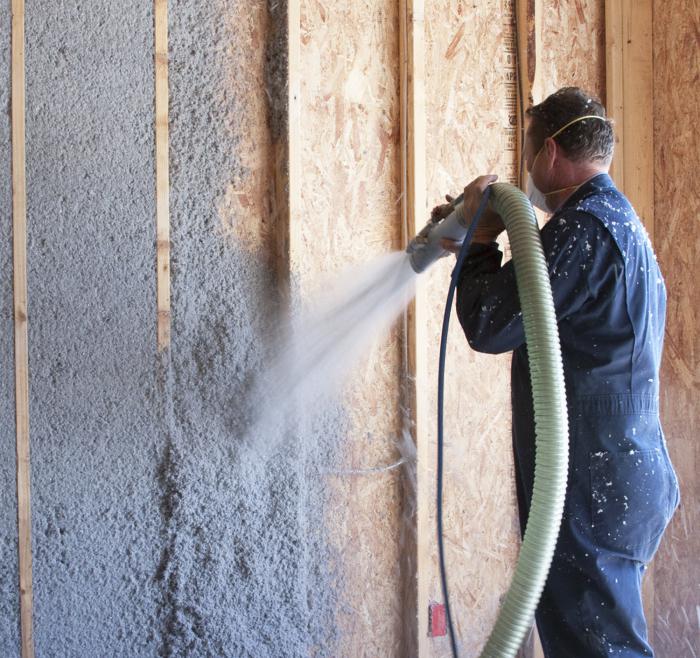

There are also additional requirements for applying cotton wool in this way:
- spraying of ecowool in the room should take place at a temperature not lower than +5 degrees Celsius;
- complete drying should take place in the period from 2 to 5 days, while the temperature regime should not change;
- ventilation must be installed for wet vapors from the insulation layers.
Ways of applying ecowool
Ecowool can be insulated in two ways: dry and wet. These two methods are fundamentally different, since in the first case, the material is filled in dry, and in the second, it must be moistened. Accordingly, the wet method can be used to insulate the walls of buildings, a variety of vertical surfaces, and the dry mixture can be used for thermal insulation of horizontal objects - roofs, floors, ceilings, and the like.
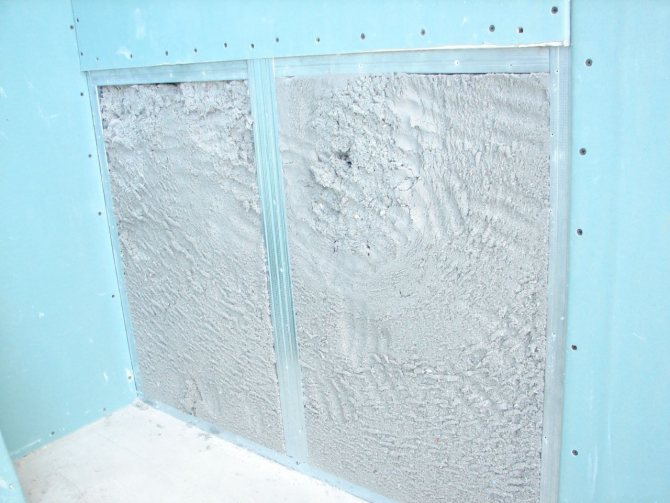

Dry ecowool application
In this case, the dry material is simply poured into the prepared space. For example, logs can be used, with the help of which the floor is laid, or vice versa, the roof. The space is thoroughly cleaned of dirt and dust, preferably with a vacuum cleaner. All surfaces must be clean and dry.
The next stage: work with insulation. Ecowool must be poured from the bag into a plastic container of a suitable size - it must be larger than the volume of the material. Using a special nozzle for an electric drill, you should carefully fluff the ecowool.
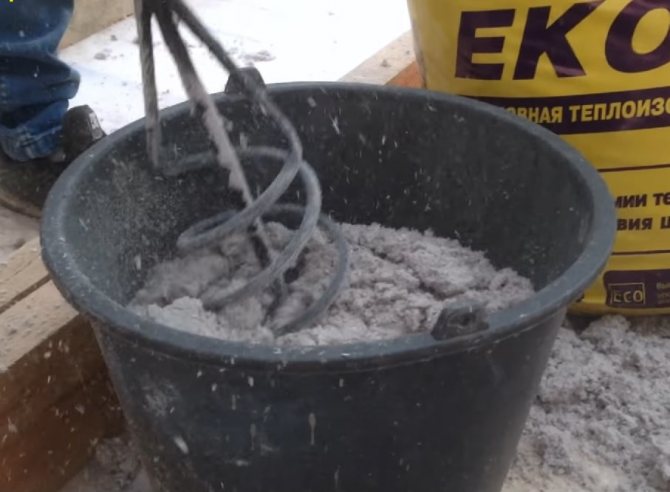

When carrying out such work, it is recommended to use personal protective equipment: glasses, a respirator, protecting from cellulose dust.
The fluffed material is poured into the designated compartments. It is also necessary to do this with glasses and a respirator. Ecowool should be covered with a dense layer, at least about ten centimeters.
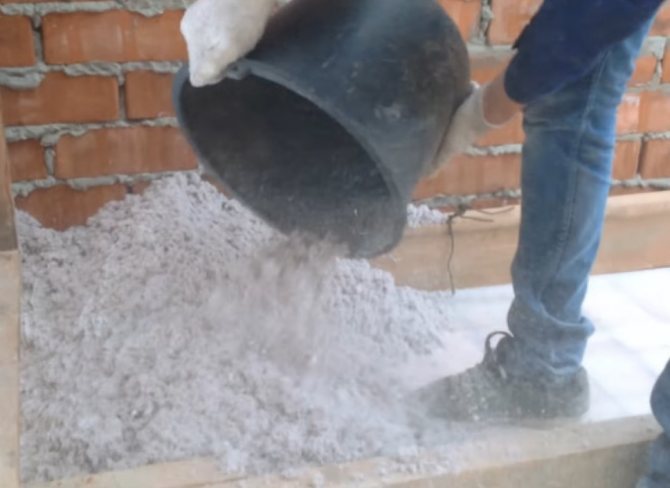

And the last operation - it is necessary to carefully tamp the insulation until a uniform and uniform layer is formed.
Also, the dry method provides for another method of insulation: the manufacture of a special box around the perimeter of the entire structure, into which a slightly moistened insulation is poured.In this case, moisture is necessary so that the cotton wool can be tamped. Of course, this option is quite troublesome in terms of making such a frame, so it will not always be advisable. As a rule, it is chosen by those owners who want to insulate their house on their own, without resorting to the help of specialists.
Wet application of ecowool
Requires preliminary preparation. In addition to the usual cleaning of wall surfaces, you will need a lathing device, which will become the basis of the thermal insulation layer. This design is simple in execution and can be made of metal profiles or wooden slats. Wooden lathing is more relevant, since wet ecowool sticks better to a loose wood structure than to a slippery metal surface.
The insulation, as well as in the dry method, must first be fluffed up and then soaked in water. Some manufacturers advise using a special adhesive solution instead of ordinary water - recommendations for using each specific type of ecowool should be read on its packaging. In addition, it is necessary to take into account the type of surface to be treated: if we are talking about the ceiling, then it is better not to risk it and dilute the material with glue.
Further, wet ecowool is applied to the crate. This is done using a special installation that sprays the solution under pressure.
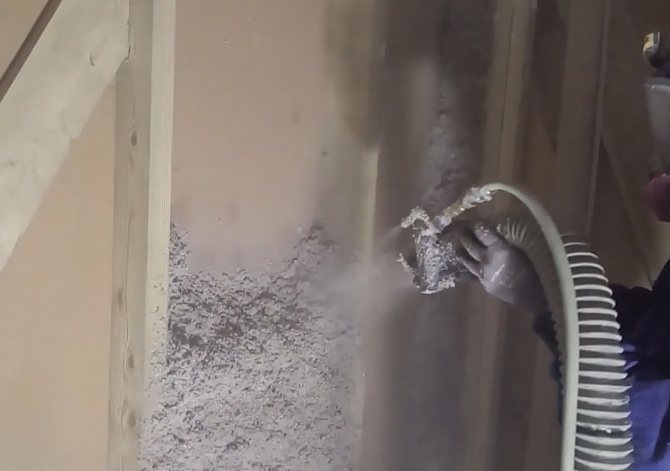

That part of the insulation that, when applied, falls behind the surfaces installed for insulation, must be carefully cut off using a sharp clerical knife.


It needs to be thoroughly dried and can be reused. That is, in fact, the application of ecowool is a waste-free process.
There is an option for wet application without involving a special installation for ecowool, as this is not always convenient. In this case, it is necessary to make a viscous glue solution of ecowool and apply it by "throwing" it onto a wooden crate. Further, the mass, before it dries, must be tightly leveled, using the frame elements as beacons. It is impossible not to mention the disadvantage of this method: the density of the ecowool applied in this way is much higher than when spraying, which means that its thermal conductivity is also higher.
This method is more artisanal, and does not correspond to the technology originally conceived by ecowool manufacturers. However, it is widely used, since the purchase of a special installation for application is an expensive process and is simply not advisable for a single use. Usually, with the help of installations, insulation is applied only by specialists who are professionally involved in construction work.
Additional benefits of using ecowool, consumer reviews
Ecowool is the most cost-effective option for room insulation. Since ecowool (the cost of which is much lower than that of other heaters) contains antiseptics in its composition, this ensures a longer service life, protection against damage by fungal formations and mold, and also scares away rodents. Ecowool has good adhesion:
- to the tree;
- to concrete;
- to the brick;
- to glass and metal.
Moreover, it has a passive chemical environment. That is, when interacting with metals, concrete or wood, it will not cause corrosion, rust or decay. It also has ecowool characteristics of fire resistance, while not emitting at elevated temperatures toxic substances that are dangerous to human life and health.
Ecowool - disadvantages
Consumer reviews are sometimes negative, primarily due to the following points:
- The process of laying the insulation is quite dusty, and for its implementation it is imperative to protect the face and respiratory tract.
- This type of insulation has great flowability, especially this negative characteristic manifests itself when laying on vertical surfaces of walls and attics.
- Ecowool has a rather low density in comparison with other insulation materials such as expanded clay, polystyrene, etc. Therefore, it will be unsuitable for insulating "floating" floors. Also, due to its low density, it cannot be used for insulating floors, on which external pressure is applied.
- Thermal insulation of complex structural surfaces by it is not possible without the use of special equipment.
- It is impossible to use ecowool as a surface for plastering walls.
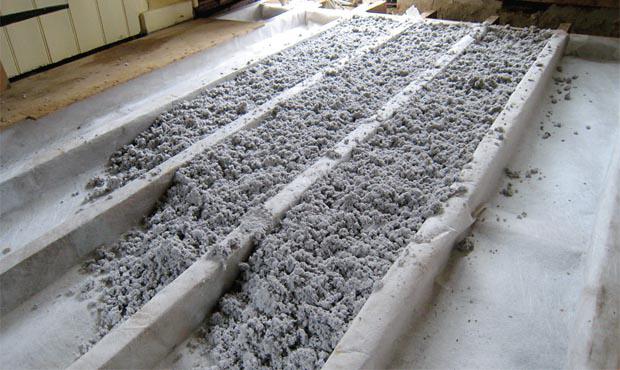

- It has a high excessive hygroscopicity, that is, ecowool cannot be used as a heater in places where the surface is in contact with the external environment (for insulating external facades, in places where the surface is in direct contact with the ground). Although this disadvantage can be easily eliminated when using waterproofing materials for installing cotton wool.
- Also, such thermal insulation has low air permeability, which is sometimes unacceptable for some structures under construction - in cases where additional ventilation is required, for example, for floors.
If we discuss the issue of what ecowool has shortcomings, reviews about the disadvantages of this material are still much less common than positive ones. The following advantages are emphasized:
- prompt installation of insulation when using inflatable units;
- environmentally friendly material that does not emit formaldehyde fumes;
- does not rot, the formation of mold and fungal formations, which ensures a long service life of the ecowool material (manufacturers guarantee the service life of the insulation up to 65 years, which is long enough for buildings);
- is an excellent soundproofing material, especially for wall ceilings and multi-layer walls;
- high resistance of the material to convective processes, when warm air inside the insulation is replaced by cold air.
Advantages and disadvantages
Manufacturers claim that ecowool insulation is an unconditionally ecological material that is recommended to be used everywhere for insulating walls and ceilings, improving sound insulation. But upon a detailed examination of the characteristics, certain pros and cons of ecowool are formed, which should be considered when choosing a heater.
pros
- Low moisture permeability. Humidification of a simple insulation leads to a loss of heat several times, which makes its use ineffective. As for ecowool, in this case, moistening it by 25% leads to a loss of heat by only 5%, which makes its use useful and financially profitable.
- Seamless insulation. To use rolled insulation, avoiding cold bridges, you will need at least 2-3 layers of material - this is financially costly. Ecowool fills all the voids, making its use easier and financially more profitable.
- High performance of noise absorption. It is an excellent material for absorbing sounds, therefore it is recommended to use ecowool for the construction of residential buildings located on busy streets and near the roadway.
- Affordable price. With low consumption, this material becomes affordable for all segments of the population.
Minuses
- Complexity of installation. It is necessary to fill all the cracks with material, for which it is necessary to blow out the ecowool. And this requires special equipment. You have to call a team of workers and pay for their work.
- Waste of time. The presented drawback, first of all, relates to the wet method of laying the insulation. In wet application of ecowool, its complete drying is required, which takes at least 3 days.
- Low material rigidity. In comparison with foam, this material has a low rigidity, which requires additional construction of the frame.
- Shrinkage of the material. Already in the second year of operation of the building, the insulation shrinks when it is placed vertically.
- Combustion of material. It is a mistake to believe that ecowool does not burn at all. It does not burn, but smolders, which creates a risk of ignition of nearby materials.
It follows that ecowool is a specific material that requires adherence to recommendations, both in use and in subsequent operation.
